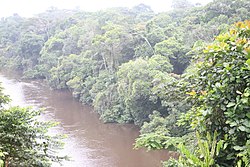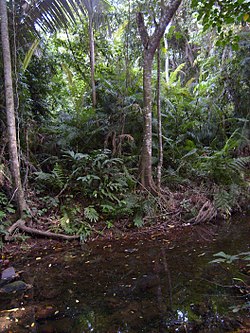Wilderness or wildland is a natural environment on Earth that has not been significantly modified by civilized human activity. It may also be defined as: "The most intact, undisturbed wild natural areas left on our planet—those last truly wild places that humans do not control and have not developed with roads, pipelines or other industrial infrastructure."
Some governments establish them by law or administrative acts, usually in land tracts that have not been modified by human action in great measure. The main feature of them is that human activity is restricted significantly. These actions seek not only to preserve what already exists, but also to promote and advance a natural expression and development. Wilderness areas can be found in preserves, conservation preserves, National Forests, National Parks and even in urban areas along rivers, gulches or otherwise undeveloped areas. These areas are considered important for the survival of certain species,biodiversity, ecological studies, conservation, solitude, and recreation. Wilderness is deeply valued for cultural, spiritual,moral, and aesthetic reasons. Some nature writers believe wilderness areas are vital for the human spirit and creativity. They may also preserve historic genetic traits and provide habitat for wild flora and fauna that may be difficult to recreate inzoos, arboretums or laboratories.
The word wilderness derives from the notion of "wildness"—in other words, that which is not controlled by humans. The mere presence or activity of people does not disqualify an area from being "wilderness." Many ecosystems that are, or have been, inhabited or influenced by activities of people may still be considered "wild." This way of looking at wilderness includes areas within which natural processes operate without human interference.
The WILD Foundation states that wilderness areas have two dimensions: they must be biologically intact and legally protected. The World Conservation Union (IUCN) classifies wilderness at two levels, Ia (Strict Nature Reserves) and Ib (Wilderness Areas). Most scientists and conservationists agree that no place on earth is completely untouched by humanity, either due to past occupation by indigenous people, or through global processes such as climate change. Activities on the margins of specific wilderness areas, such as fire suppression and the interruption of animal migration also affect the interior of wildernesses.
Especially in wealthier, industrialized nations, it has a specific legal meaning as well: as land where development is prohibited by law. Many nations have designated wilderness, including Australia, Canada, New Zealand, South Africa and the United States. Many new parks are currently being planned and legally passed by various Parliaments and Legislatures at the urging of dedicated individuals around the globe who believe that "in the end, dedicated, inspired people empowered by effective legislation will ensure that the spirit and services of wilderness will thrive and permeate our society, preserving a world that we are proud to hand over to those who come after us."




